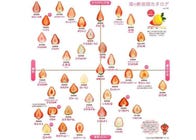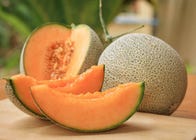
Japan has a unique and distinct food and culinary culture and the selection Japanese fruits is no different. A variety of interesting, uncommon and peculiar fruits are available across Japan that are distinct and used in a variety of ways. Some fruits are eaten raw while others are pickled, fermented, cooked, baked or infused with other foods (and spirits) to create delicious, healthy and unparalleled taste experiences.
Here is a list of just some of the amazing fruits Japan has to offer and where and when to find them.
- Table of Contents
-
- Akebi (Chocolate Vine) (アケビ)
- Akane Apple (あかねりんご)
- Amanatsu/Natsu Mikan (甘夏)
- Biwa (Loquat) (びわ)
- Buntan (Pomelo) (文旦)
- Dekopon (デコポン)
- Fuji Apple (ふじりんご)
- Iyokan Orange (いよかん)
- Hebesu (へべす)
- Hyuganatsu (日向夏)
- White Strawberries (’Hatsukoi-no-Kaori’ - Smell of first love - 初恋の香り)
- Ichijiku (Fig) (いちじく)
- Kaki (Persimmon)(柿)
- Koshu Grapes (甲州ぶどう)
- Kyoho Grapes (巨峰ぶどう)
- Nashi (Japanese Pear) (梨)
- Sanbokan (三宝柑)
- Sudachi (すだち)
- Shikuwasa (シークヮーサー)
- Ume (Japanese plum) (梅)
- Yuzu (ゆず)
Akebi (Chocolate Vine) (アケビ)
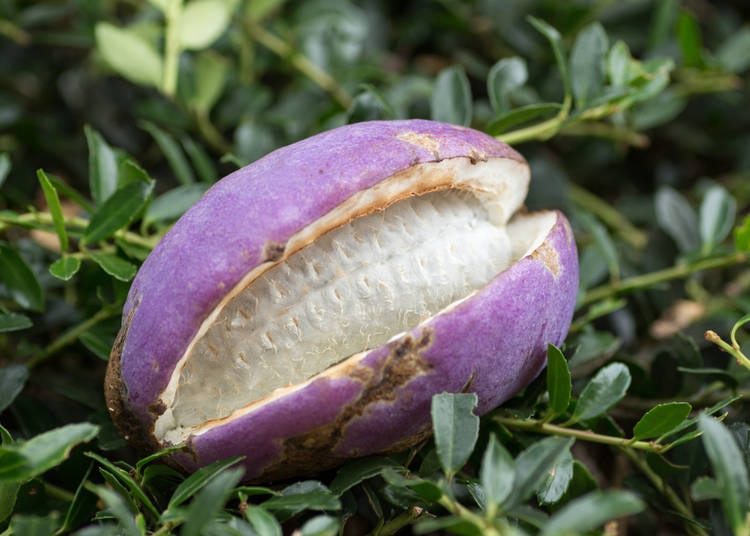
A bright violet colored fruit that resembles a sliced open eggplant, the fleshy white part inside with black seeds is slightly sweet while the rind is bitter. This wild fruit comes from North Japan and is mainly grown in Yamagata Prefecture. An autumn fruit, usually only available for a couple of weeks, not many Japanese outside of the region have necessarily tried or even heard of this fruit. The taste of the pulp is described as slightly sweet and is eaten raw, while the rinds can be stuffed like a vegetable with meat and miso and boiled. The leaves of Akebi vines are also infused to make tea.
Famous in: Northern Japan
Peak season: Late autumn
Akane Apple (あかねりんご)
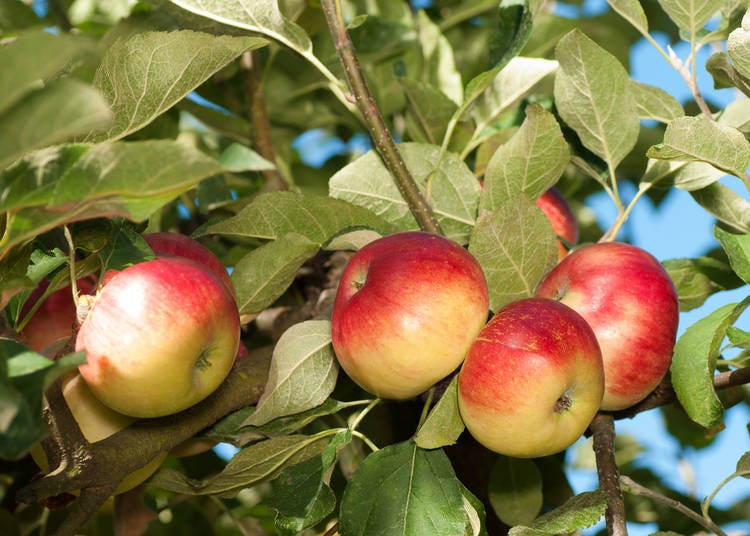
One of the three famous apples in Japan, Akane apples are known for their deep red color and firm white flesh. They are a mixture of sweet and tart tasting and are usually eaten raw as they tend to brown quickly, soften and do not keep well over long periods. Akane apple trees however are strong against disease and can produce fruit in both warm or cold climates making it a popular apple in Japan.
Famous in: Iwate Prefecture
Peak Season: Late Summer to early Fall
Amanatsu/Natsu Mikan (甘夏)
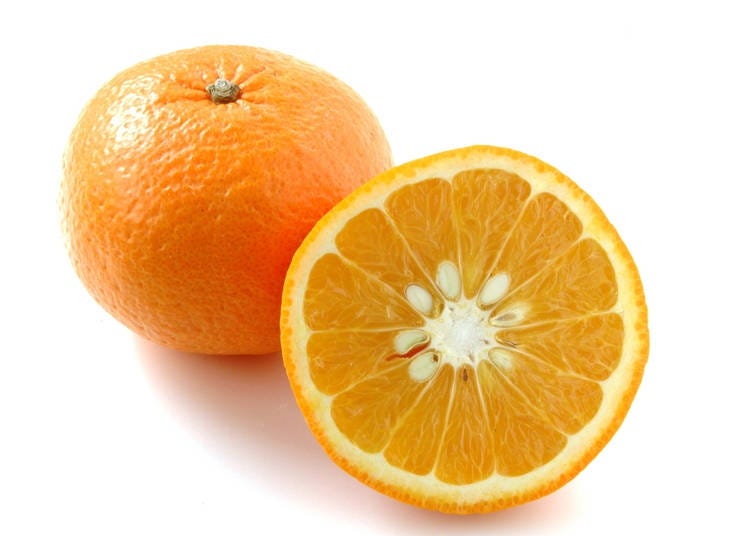
A grapefruit sized citrus fruit, Amanatsu also called Natsumikan are large, thick-skinned fruits that are very bitter until they ripen. The skin is light yellow and slowly oranges as it ripens. The fruit is eaten raw or used to make marmalade, ice cream and liquor and wine. Researchers at Chiba University also found that extracts from the Natsumikan alleviated chronic allergic dermatitis and found many medicinal benefits of the fruit.
Famous in: Yamaguchi Prefecture
Peak season: February to April
Biwa (Loquat) (びわ)
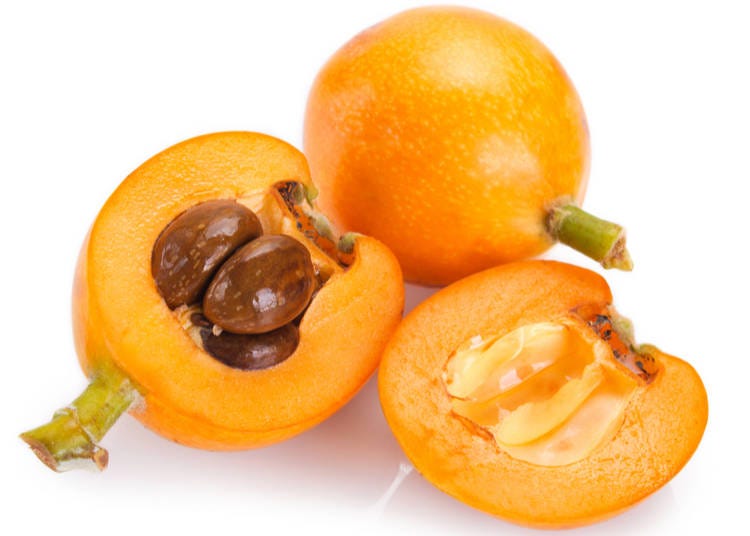
Originally from Southeastern China, according to research from Purdue University, biwa fruit trees were cultivated in southern Japan for over 1,000 years. Japan is also the biggest producers of Biwa fruit with annual crops of over 17,000 tons. The biwa fruit or loquats are small pear shaped pale yellow colored fruits that have 3 to 5 dark brown large seeds in the center. The fruit is sweet and succulent and can be eaten raw or is often stewed and made into jam, sauce or jelly.
Famous in: Southern Japan
Peak season: Early spring
Buntan (Pomelo) (文旦)
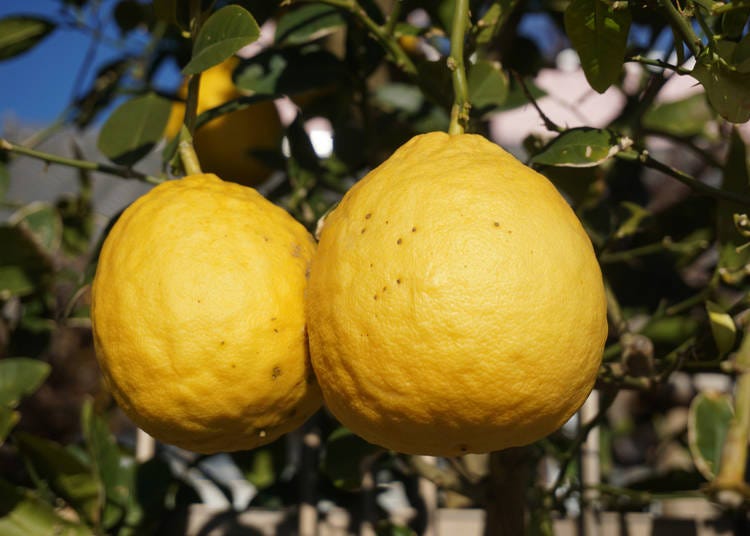
Japan houses over 40 different varieties of Buntan or Pomelo which is a large, smooth, yellow skinned citrus fruit that resembles a grapefruit. However, the inner pulp is less bitter and quite sweet. Unlike the Natsumikan, the Buntan’s thick rind is hard to peel and must be cut using a knife. The fruit which is high in Vitamin C is often used in the prevention of colds and to reduce fatigue. Buntan can be eaten raw, added to salads or noodle dishes as a garnish or even made into jams and sauces.
Famous in: Kochi Prefecture
Peak Season: Late Fall and Winter
Dekopon (デコポン)
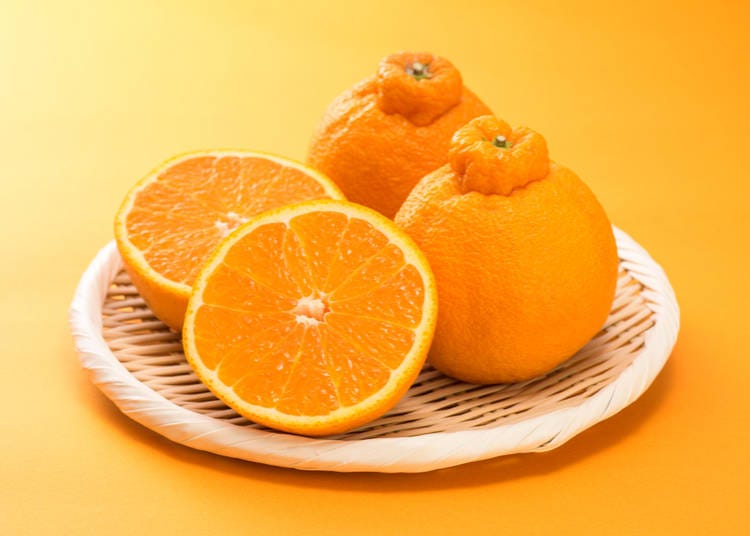
Dekopon is a big, orange skinned citrus fruit that has thick bumpy skin and a large protruding bump at the top. They may not look appealing from the outer surface, but after removing the peel quite easily, inside is sweet, seedless and juicy fruit which has now become one of the most expensive and widely appreciated citrus fruits in Japan. Eaten fresh or added to salad, yogurt, ice cream or smoothies, Dekopon are a popular citrus fruit during the winter season.
Famous in: Kumamoto Prefecture
Peak Season: December to February
Fuji Apple (ふじりんご)
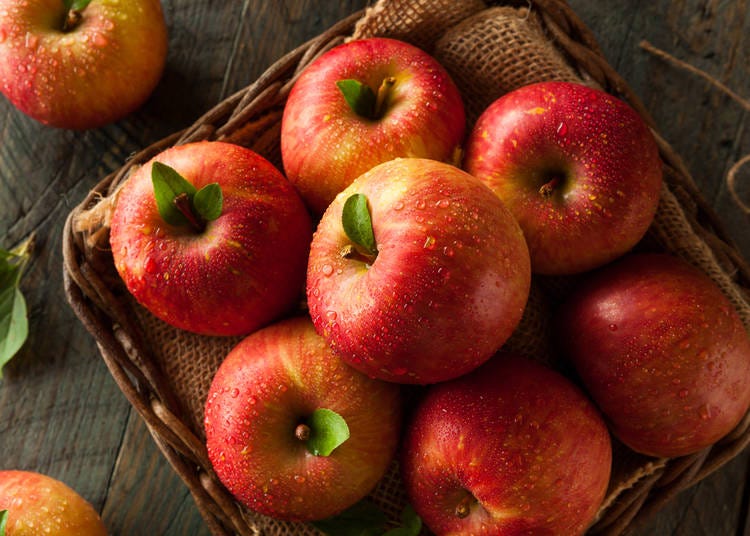
Fuji apples are large apples that are light red with a touch of yellow. They are Japan’s most popular and best-selling apples both in Japan and as an export. Over 900,000 tons of Fuji apples are produced each year and the US Apple Association lists them as the third most popular apple in the world.
Fuji apples are not only larger than other Japanese apples but have a very dense flesh that is crispy and juicy. The sweetness of the apple and the long shelf life have made Fuji apples a great choice for eating as is or used in a variety of ways such as in jams, sauces, soups, salads, in pies and strudels as well as a variety of desserts. Because the apples hold up well during cooking, they can also be stuffed in meats, baked, fried or topped on pizza.
Famous in: Aomori
Peak Season: Year round
Iyokan Orange (いよかん)
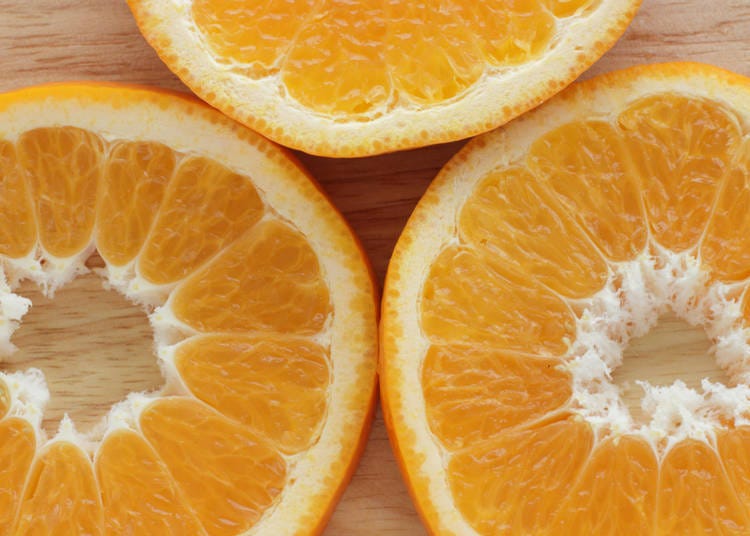
This Japanese citrus fruit, which is the second most produced citrus fruit in Japan, comes in two different shapes. The first and most popular is the natural round version. With a thick, glossy outer peel and perfect round shape, the Iyokan can easily be peeled and eaten raw. It is sweeter than a grapefruit but more bitter than an orange.
The newer and more unique version, called “Gokaku Iyokan” was created much later on in 2009 by farmers in Ehime to promote the fruit to increase sales as well as turn the Iyokan into a good luck charm for students taking exams. This version, called Gokaku , in Japanese means pentagram but with a slightly different pronunciation can also mean to pass an exam. The farmers use a special pentagon-shaped mold they place around the fruit to create the shape.
Famous in: Ehime Prefecture
Peak Season: January and February
Hebesu (へべす)
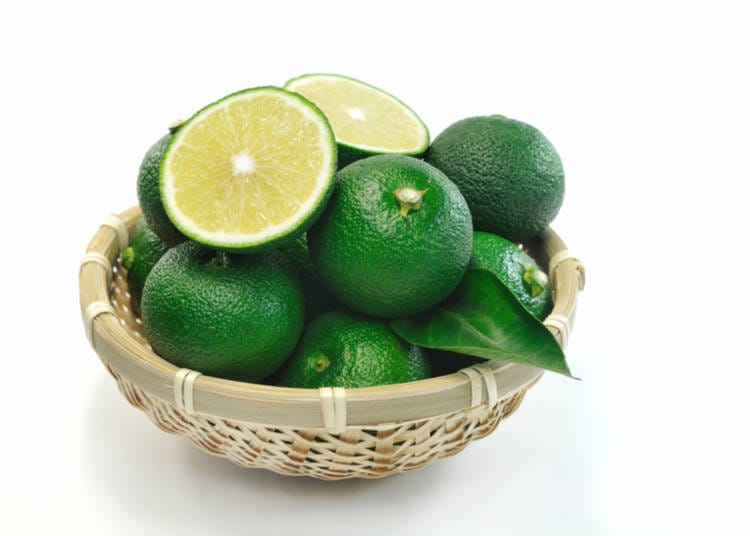
A small, highly acidic, citrus fruit grown in Miyazaki has been studied and shown to have flavonoid, which is known to reduced risk of cancer, heart disease, asthma, and stroke. This small, round, seedless green fruit, is often sprinkled on top of seafood and other foods much like a lime.
A very versatile fruit, the juices from the Hebezu can be used for cooked dishes like pasta, on sushi, meats, salads, or vegetarian dishes. Adding a light, refreshing flavor, Hebezu is quite popular in Miyazaki cuisine.
Famous in: Miyazaki Prefecture
Peak Season: July to October
Hyuganatsu (日向夏)
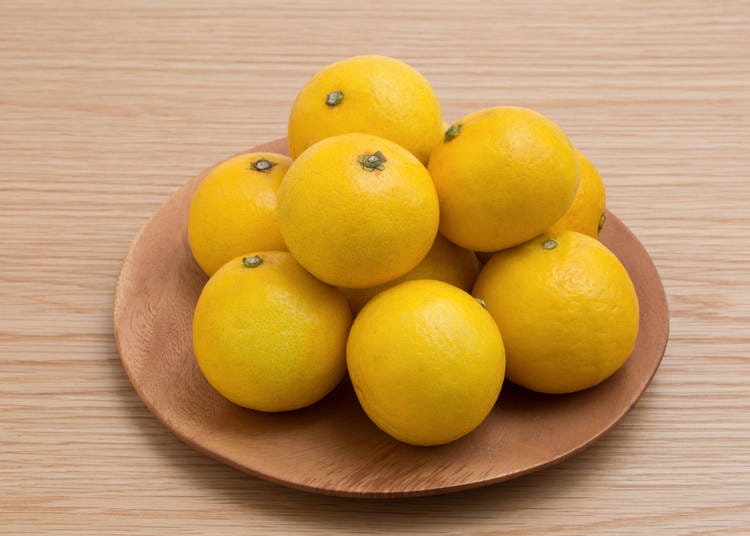
Where Hebezu is referred to as the “lime” of Miyazaki, Hyuganatsu is the “lemon”. A round, slightly oblong yellow citrus food, Hyuganatsu is also a popular addition to foods and drinks adding a slightly sour and sweet flavor. And unlike other citrus fruits where the pith is bitter, the Hyuganatsu pith is sweet and left attached to the fruit to add more flavor. Cut into pieces and eaten raw, added to drinks, used in salads or eaten with some sprinkled sugar, Hyuganatsu are high in vitamin A and C. Studies have also shown they are may help inhibit bone loss.
Famous in: Miyazaki Prefecture
Peak Season: Spring to early Summer
White Strawberries (’Hatsukoi-no-Kaori’ - Smell of first love - 初恋の香り)
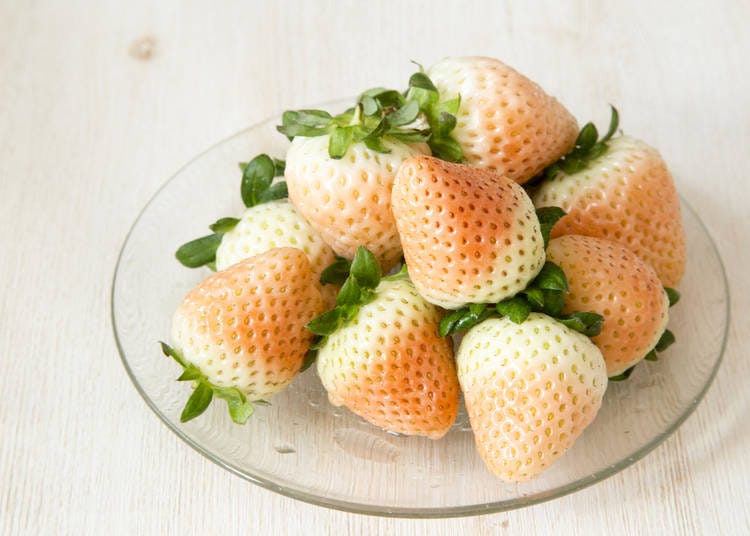
Unlike red strawberries, white strawberries are deficient in certain proteins that redden the skin therefore leaving them lacking color and having a pale white look. The seeds are red but the outer and inner fruit are white or pinkish. These strawberries were developed in 2006 and though they look like they would be unripe and sour tasting, are quite sweet and plump. They are also larger than other strawberries and more expensive. They are eaten raw or added to cakes and other desserts or stewed to make jam or jelly.
Famous in: Yamanashi Prefecture
Peak Season: Spring and Summer
Ichijiku (Fig) (いちじく)
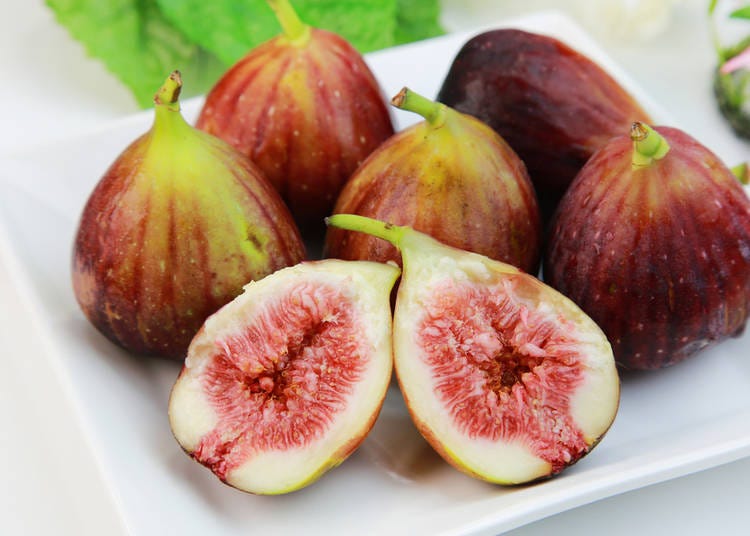
The fig has been cultivated since ancient times and because it can tolerate drought and other harsh weather conditions, was grown throughout the Mediterranean, Middle East and Asia. There is much historical and religious history behind figs but in Japan figs or Ichijiku are mainly a popular and widely eaten fruit for the sweet taste and health benefit of being high in fibre. The outer skin of Ichijiku becomes a dark brown when ripe and inside has a juicy seed filled dark magenta center that bursts with nectar. Ichijiku can be eaten raw, dried, used in jam, salads, added to meat dishes, baked goods and even eaten tempura style.
Famous in: Aichi and Wakayama
Peak Season: Late summer and fall
Kaki (Persimmon)(柿)
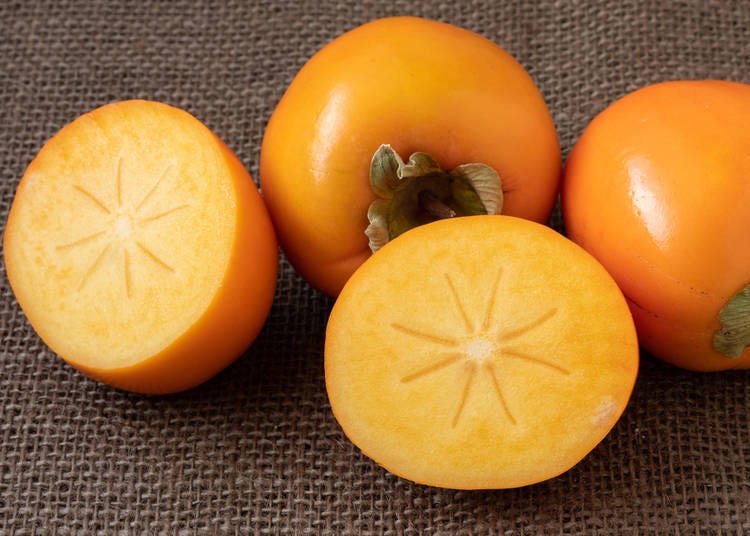
A popular and widely cultivated fruit, Kaki look like orange tomatoes or baby pumpkins. According to the United States Department of Agriculture, “Persimmons are fat-free and are a good source of healthy carbohydrates and natural sugar.” They have an orangish-red peel and are found all across Japan in fields and residential gardens as they are known for good luck and longevity and are often used as a decoration during the New Year's season.
There are two main varieties of Kaki, astringent and non-astringent. Astringent Kaki or hachiya-gaki are smaller and oblong shaped. They have a very firm, bitter and acidic taste so must be eaten once they are ripened and soft or dried. They are popularly dried outdoors and have a very soft, jelly like pulp which can be eaten with a spoon or added to puddings, yogurt, cereal or baked goods.
The non-astringent type of Kaki is called fuyu-gaki and are bigger, rounder and firmer. They are eaten raw but usually without the peel. As the Kaki becomes riper, it gets sweeter so it is a popular ingredient in Japanese sweets. Kaki are also a popular fruit that have been eaten to improve health. Kaki have high amounts of vitamin A, vitamin C, fibre and antioxidants which help with weight loss, lower cholesterol, improve vision and reduce the risk of diabetes, heart disease and other digestive problems.
Famous in: Nara Prefecture
Peak Season: October and November
Koshu Grapes (甲州ぶどう)
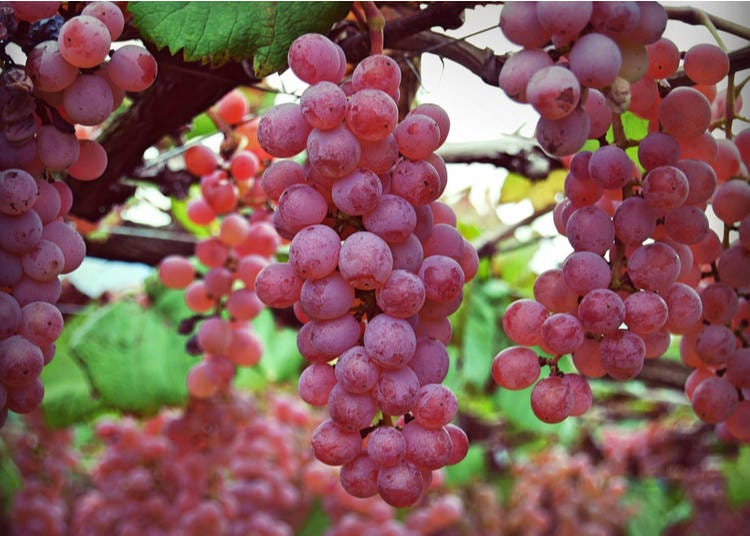
Koshu grapes are most widely used to make white wine rather than for consumption. According to the Japanese Food Product Overseas Promotion Center, Koshu grapes are the most planted grapes in Japan with 95% being planted in Yamanashi. A small, lighter purple-pink color, these grapes are less sweet and have grown in popularity in Japan and abroad as providing a light tasting, fresh and fruity tasting white wine which matches with a variety of Japanese dishes. The grapes are strong against disease and have a distinct acidic taste which complement many Japanese foods like sashimi, miso and various pickled vegetables.
Famous in: Yamanashi Prefecture
Peak Season: July to December
Kyoho Grapes (巨峰ぶどう)
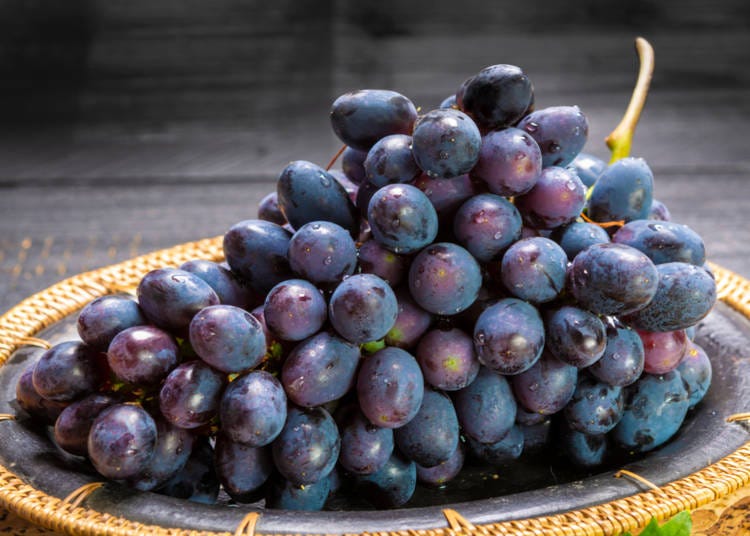
Kyoho grapes in direct contrast to Koshu grapes are large, dark purple black grapes that are juicy and sweet. Kyoho, which in Japanese means “huge peak,” are larger than most other grape varieties. They have a thick skin which is easily removed and usually not eaten. They are a dessert grape and are quite expensive so are often given as gifts or used in fancy desserts or to make Japanese cocktails called Chu-hai.
Kyoho grapes are so popular and loved by many Japanese that many products are created with Kyoho grape flavoring like Kit Kat chocolates or Kyoho flavored ice cream.
You will most likely find Kyoho grapes atop cakes, parfaits or in jelly in high end cafes and many people often give bunches of grapes as souvenirs or omiyage to friends, family or coworkers.
Famous in: Nagano and Yamanashi Prefectures
Peak Season: August and September
Nashi (Japanese Pear) (梨)
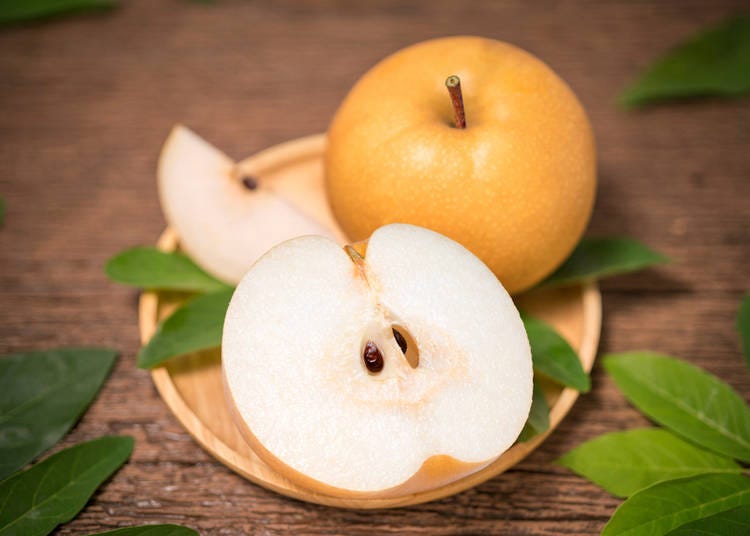
Compared to pears in Western countries, the pears of Japan are larger, rounder and have a browner skin. They are also very crispy, watery and sweet, making them excellent to eat raw. Nashi are often given as gifts as they are expensive and large in size. The peel is often removed and nashi are usually sliced and served raw. They are also found in desserts or made into jelly. They can be added to salad or grated to be added to different baked goods like pies, muffins or cakes.
Famous in: Central Japan
Peak Season: August to October
Sanbokan (三宝柑)
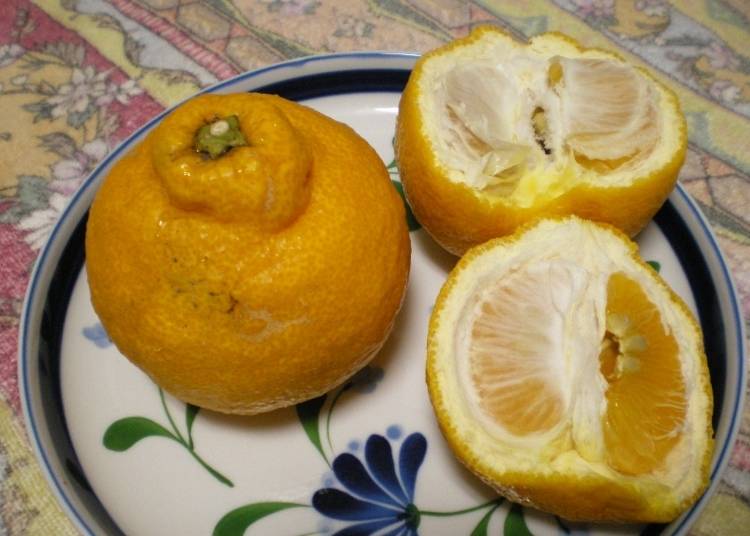
A big, thick-skinned yellowish citrus fruit that is distinguishable because of its large navel bump that protrudes from the base. Sanbokan fruit is often called a sweet lemon because of its similar sour-sweet taste - like biting into a glass of fresh lemonade. The peel is thick and bumpy but easy to remove and the fruit is fleshy and soft. There are however many seeds making it hard to eat so often it is made into juice, jelly, marmalade or jam.
Famous in: Wakayama Prefecture
Peak Season: January to March
Sudachi (すだち)
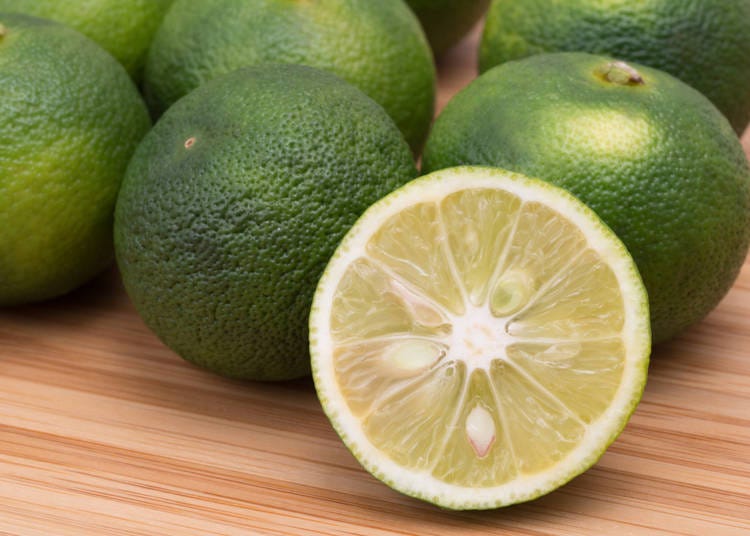
A small, round green colored citrus fruit similar to lime and lemon. This fruit is not eaten raw but used mostly by squeezing the juices to add flavor to other foods. A slice of sudachi is often used to add a unique but tart and tangy flavor to a variety of Japanese dishes like soba noodles, sashimi, cooked fish dishes, salads, mushrooms, miso, soups and hot pots. The juice is also used in vinegar, salad dressing, sauces and most popularly an ingredient in the Japanese sauce called ponzu.
Sudachi fruit are quite widely available and inexpensive in Tokushima which produces 98% of the yield, but the fruit is more expensive in other parts of Japan. Low in calories but high in Vitamin C, Sudachi is a popular addition to alcohol, desserts and fruit juices.
Famous in: Tokushima Prefecture
Peak Season: Fall through winter
Shikuwasa (シークヮーサー)
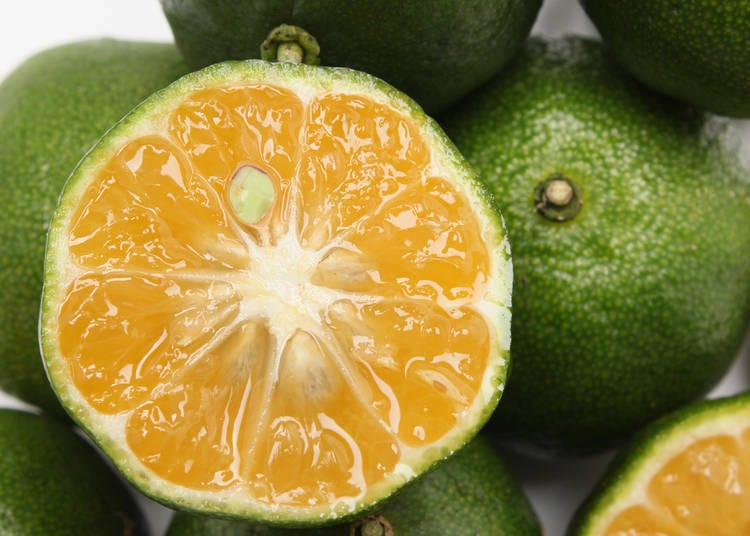
Similar to Sudachi, Shikuwasa is an Okinawan sour fruit that is small, round and green used mainly for its juice rather than eaten. According to MAFF (Ministry of Agriculture, Forest and Fisheries) “its skin contains a functional component called polymethoxyflavone that has a function of reducing body fat and improving blood sugar levels.” This might be one of the many reasons why Okinawans have the highest life expectancy in Japan and house the world’s highest amount of people who are over a hundred years old.
Sudachi can be used in both savoury or sweet dishes and are commonly added to fish, meat, vinegar, sauces, dressings, ice cream, alcohol and desserts.
Famous in: Okinawa
Peak Season: July
Ume (Japanese plum) (梅)
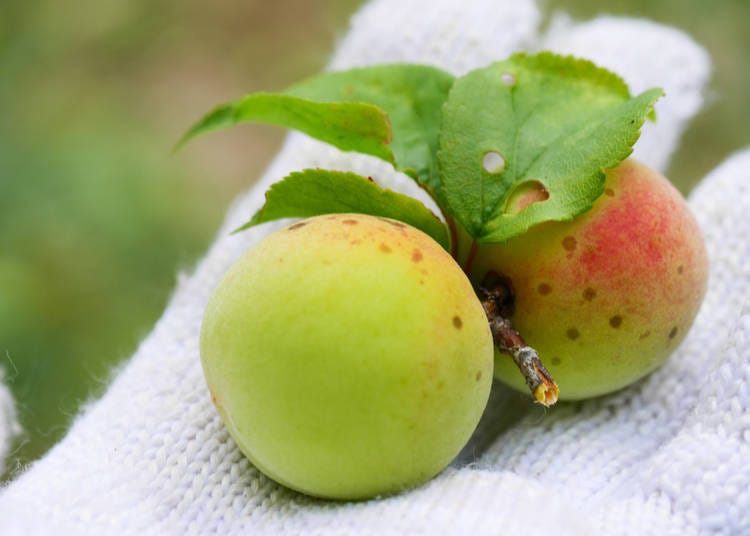
Ume plums are possibly one of the most popular and widely used fruits in Japan. They are not eaten raw, but pickled, fermented and added to alcohol or used in a variety of foods. Ume plums are pickled with salt and preserved and processed into a widely consumed form called umeboshi. Umeboshi are used in a variety of culinary and medicinal purposes and are a long standing traditional and historical part of Japanese society.
Ume plums can be infused into tea, are fermented to make the popular alcoholic drink umeshu and are often used as garnish for rice, noodles, salads and other Japanese dishes. Umeboshi onigiri or riceballs are a beloved snack for Japanese people as well.
Although ume plums don’t have much nutritional value in the raw state, once they are pickled they have many health benefits because of the high acidity. Ume is also widely believed to aid in decreasing fatigue, helping with digestion, and helping ward of colds and other illnesses.
Famous in: Across Japan
Peak Season: Early summer
Yuzu (ゆず)
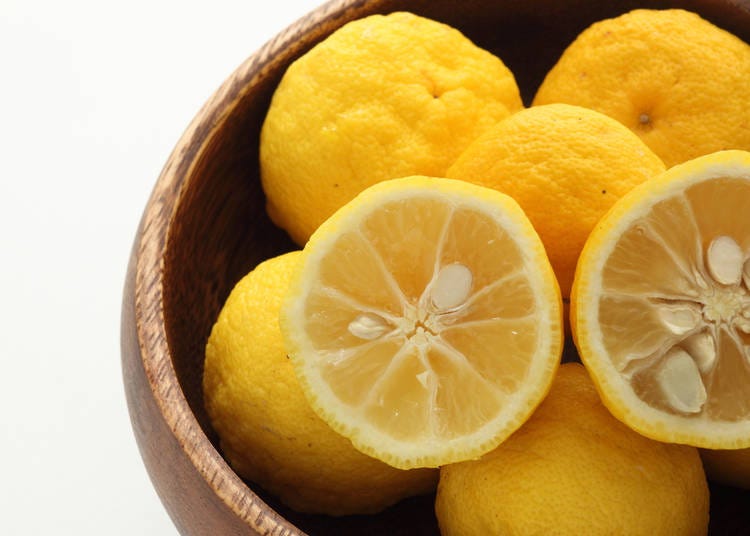
Yuzu fruit, first brought over from China is a popular fruit during the winter season. A large, dark green colored citrus fruit when ripened, it’s popular uses are for it’s juice for food and it’s aroma for baths. A celebrated winter fruit, Yuzu bathes are a traditional practice that are believed to soften skin and ward of illnesses like colds and flu. The aroma that emerges when placed in hot water is adds a relaxing and therapeutic addition to bathing.
Yuzu is most famously found in Yuzu Ponzu sauce which is a citrus-based tangy sauce often used with sashimi, tofu, hot pots and a variety of Japanese dishes. Yuzu is also added to spices to create a wasabi like condiment called yuzu kosho. Tangy and spicy it adds a unique flavor to a variety of meat and fish dishes.
Another common use of yuzu is to mix it with honey and drink yuzu tea which is a common winter drink to aid against colds and sore throat. Yuzu can also be added to alcohol, desserts and candy.
Famous in: Kochi Prefecture
Peak Season: Late Fall
Although some fruits in Japan might be more expensive than those where you live, overall depending on the season and area, you can find many affordable and impeccable fruits in Japan. And with so much selection available as well as a variety of ways to consume them, fruits in Japan are a well-loved and integral part of the lifestyle of Japanese people.
Written by:

*Prices and options mentioned are subject to change.
*Unless stated otherwise, all prices include tax.
Limited time offer: 10% discount coupons available now!
Recommended places for you
-

Kyoto National Museum
History Museums
Kyoto Station, To-ji Temple
-
Appealing
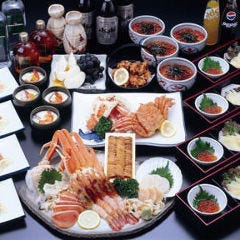
Rukku and Uohei
Izakaya
Sapporo / Chitose
-
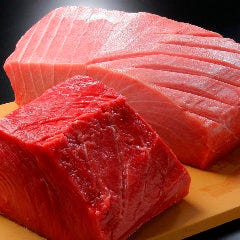
Kamesushi Sohonten
Sushi
Umeda, Osaka Station, Kitashinchi
-
Goods

Yoshida Gennojo-Roho Kyoto Buddhist Altars
Gift Shops
Nijo Castle, Kyoto Imperial Palace
-
Menu
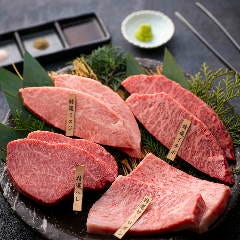
ISHIDAYA Hanare
Yakiniku
Kobe, Sannomiya, Kitano
-
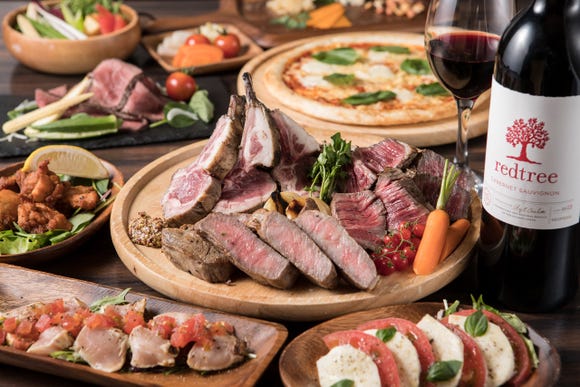
Jukuseiniku-to Namamottsuarera Nikubaru Italian Nikutaria Sannomiya
Izakaya
Kobe, Sannomiya, Kitano
-

Everything You Need To Know About the Kyoto-Osaka Sightseeing Pass
-

15 Must-Try Restaurants in Ikebukuro: From Aged Yakiniku to All-You-Can-Eat Sushi, Plus Adorable Animal Cafés
-

Step Into the Story: Inside Immersive Fort Tokyo
-

The CASIO S100: How CASIO's Masterpiece Calculator Redefines Business Elegance With Japan-Made Reliability
-

Best Things to Do in Tokyo in April 2024: Events, Festivals & More
-

The Complete Guide to the Kintetsu Rail Pass
-

Shirakami-Sanchi Guide: Hiking in Japan's Intense & Untouched Beech Forest (Aomori)
-
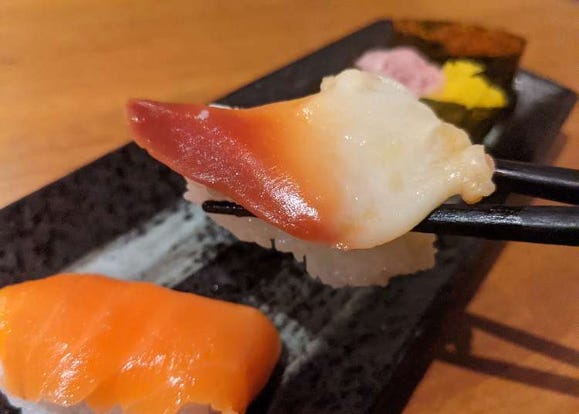
From Luxurious to Quirky: Savor 120 Glorious Minutes of All-you-can-eat Hokkaido Sushi at 'Uoppshu'
-
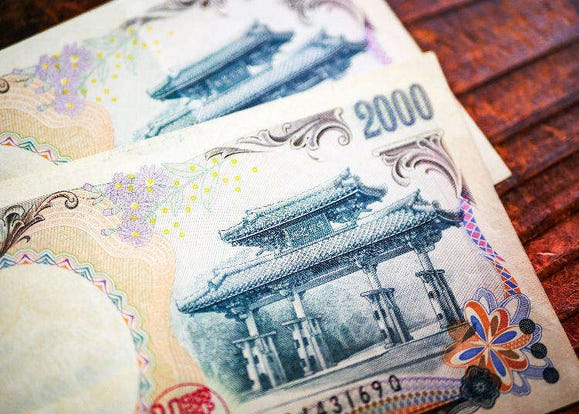
Even Japanese People Don't Know That?! Fun Facts & Trivia About Japanese Money
-
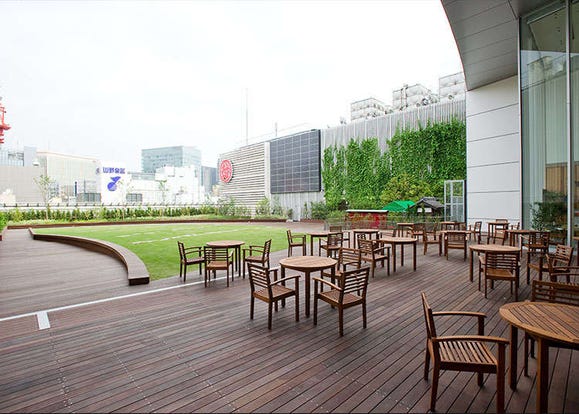
Visit roof terraces in Ginza during the free time of your sightseeing tour!
-
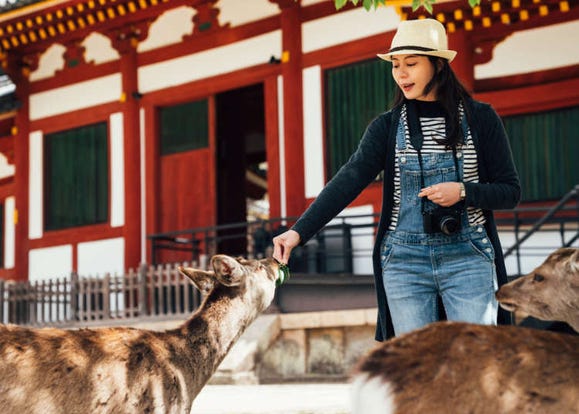
5 Must-Visit Nara Temples and Shrines: Discover the Timeless Beauty of Japan's Ancient Capital
-
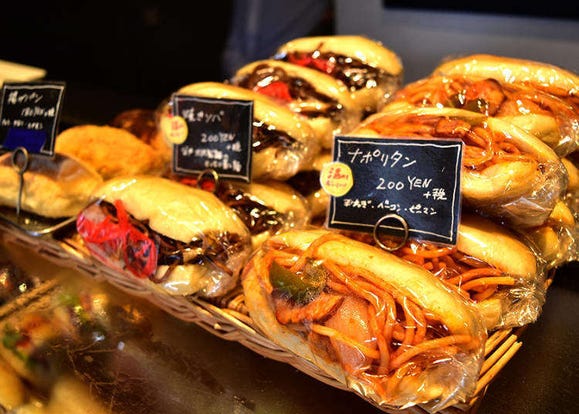
'Better Than Egg Sandwiches?!' Snacking on Koppe-Pan, Japan’s Popular Bread Rolls!
- #best sushi japan
- #what to do in odaiba
- #what to bring to japan
- #new years in tokyo
- #best ramen japan
- #what to buy in ameyoko
- #japanese nail trends
- #things to do japan
- #onsen tattoo friendly tokyo
- #daiso
- #best coffee japan
- #best japanese soft drinks
- #best yakiniku japan
- #japanese fashion culture
- #japanese convenience store snacks














